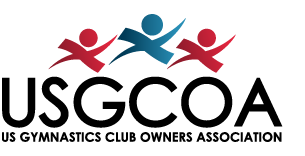5 Tips for Creating a More Inclusive Gymnastics Club
As a gymnastics club owner, you have a responsibility to promote the health and growth of your gymnasts and this means creating an environment that accommodates athletes of all kinds. Even though you may not personally meet the expectations of every gymnast or family who comes through the door, you can still set the tone for your own gymnastics facility. Educating and learning about providing an inclusive environment creates a new type of space that will feel supportive and respectful, especially for gymnasts that may feel marginalized in many of their surroundings.
Follow these five tips for creating a more inclusive and accessible gymnastics club for all types of club members.
1. Educate Yourself about Gymnastics Inclusivity:
To understand how to create an inclusive gymnastics club, you have to learn and understand what “inclusive” really means in today’s social environment. Creating an inclusive environment requires altering your bias and views about individuals and groups.
This involves actively practicing mindfulness and intentional efforts when encouraging your athletes, your staff, and the settings of your gymnastics club.
To get a better understanding and find ways to immerse yourself in an inclusive community could mean reaching out to local organizations or groups like
- LGBTQIA+ Groups
- Racial Injustice Groups
- Disabled Groups
- Mental Health Awareness Groups
- Low-Income groups
- Body Positive Groups
Think about what group could use the most support in your community and how your gymnastics club could benefit them.
2. Create Intentional Marketing Efforts for Inclusive Gymnastics :
Take a look at all your gymnastics marketing materialsand ask yourself whether or not you have representation of all types of gymnasts in your advertising.
Try to create visual and internal representations of groups in your club by including:
- Various Body Sizes: Thin/petite, average, muscular, and plus size representation
- Large Age Ranges: Showcase the variety of ages you have in all of your classes offered or look into new types of classes you can offer for a large age gap
- Different genders beyond just male and female identification, especially when it comes to member sign-up forms
- Different races and cultures
- Those of varying incomes
- Recognizing more than major holidays, like pride month, Juneteenth, Hispanic Heritage Month, Asian-Pacific Month, etc…
Showcasing these differences creates a more welcoming space for others to say “Hey, they look like me!” Avoid stereotyping or appropriation in your marketing material by incorporating context and empathy in your strategy.
Keep in mind the difference between diversity and inclusivity. A great quote by Vernā Myers you can use as a frame of reference for your marketing efforts is, “Diversity is being invited to the party. Inclusion is being asked to dance.” One can’t exist without the other.
3. Use Inclusive Language in Your Gym:
Language is a big part of including inclusivity, as it needs to account for you, your staff, and how to address your club members. It may take a little practice, but a baseline is to avoid slang, references, or other verbiage that could be seen as offensive and discriminatory.
It’s also important to include inclusive language in all job descriptions, website copy, and other marketing materials. Using gender-neutral language is a great way to start consciously focusing on your shift to inclusivity, especially when coaching and referring to your staff and gymnasts.
Use the following best practices when adjusting your language:
- Avoid using terms like “ladies”, “girls & boys”, or “gentlemen” during coaching and use more inclusive terms like “team” or assign fun team names nicknames that are non-gender/race specific like “The Magnificent Seven” or “The Fierce Five”.
- Avoid using Mr., Mrs., Miss, or Ms. by calling someone by their preferred name. An example of how you can greet someone: “Hi I’m (preferred name), it’s nice to meet you! What is your name and do you have any preferred pronouns?”
- Greet groups using genderless terms such as Team, Friends, family, folks, or guests.
4. Creating Accountability in your Gymnastics Club:
Accidents are bound to happen during this transition period, so don’t be afraid to politely correct staff or other gym members about what you are trying to accomplish for inclusive gymnastics club.
However, you should never tolerate rude comments or jokes, especially about one’s identity or culture. Respect goes in all directions and requires everyone (including staff, gym members, and yourself) to work together to encourage an environment of safety. Be direct, but still polite, about all of your communication
5. Be Specific About the Access of Inclusivity in your Gymnastics Club:
Take stock of your gymnastics facility and see what it provides for groups outside of what your current members are.
Things to ask yourself could include:
- Do you have wheelchair access?
- Is your club scent/fragrance-free for those with fragrance sensitivity?
- Do you have easy-to-read signs and non-slip surfaces?
- Do you offer discounts, scholarships, or free classes for low-income communities?
- Do you have a gender-neutral bathroom/locker room option?
Be clear with yourself, your staff, and your members about what you currently provide and what you hope to provide moving forward.
A big part of implementing an inclusive gymnastics club is paying attention to what is already working best for your current members and how you can incorporate new strategies to meet a wider range of individuals better. By utilizing the tips listed above, your gymnastic club can create an environment that is friendlier and more inclusive for all types of gymnasts.


